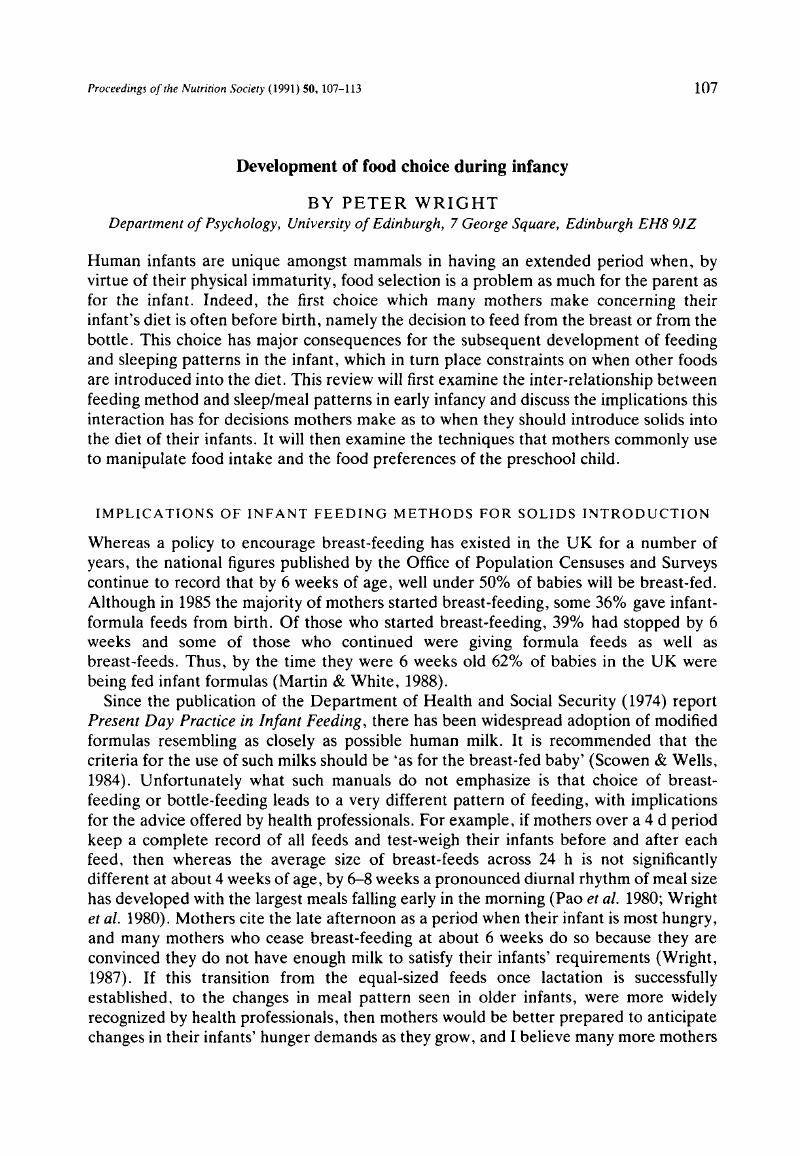Crossref Citations
This article has been cited by the following publications. This list is generated based on data provided by Crossref.
Day, Jon E. L.
Kyriazakis, Ilias
and
Rogers, Peter J.
1998.
Food choice and intake: towards a unifying framework of learning and feeding motivation.
Nutrition Research Reviews,
Vol. 11,
Issue. 1,
p.
25.
Gibson, E.L.
and
Brunstrom, J.M.
2007.
Appetite and Body Weight.
p.
271.
Dovey, Terence M.
Staples, Paul A.
Gibson, E. Leigh
and
Halford, Jason C.G.
2008.
Food neophobia and ‘picky/fussy’ eating in children: A review.
Appetite,
Vol. 50,
Issue. 2-3,
p.
181.
Heath, Philippa
Houston-Price, Carmel
and
Kennedy, Orla B.
2011.
Increasing food familiarity without the tears. A role for visual exposure?.
Appetite,
Vol. 57,
Issue. 3,
p.
832.
Olsen, Annemarie
Møller, Per
and
Hausner, Helene
2013.
Early Origins of Overeating: Early Habit Formation and Implications for Obesity in Later Life.
Current Obesity Reports,
Vol. 2,
Issue. 2,
p.
157.
Mak, Veronica, Sau-Wa
2017.
How Picky Eating Becomes an Illness—Marketing Nutrient-Enriched Formula Milk in a Chinese Society.
Ecology of Food and Nutrition,
Vol. 56,
Issue. 1,
p.
81.
Haro-Vicente, Juan
Bernal-Cava, Maria
Lopez-Fernandez, Amparo
Ros-Berruezo, Gaspar
Bodenstab, Stefan
and
Sanchez-Siles, Luis
2017.
Sensory Acceptability of Infant Cereals with Whole Grain in Infants and Young Children.
Nutrients,
Vol. 9,
Issue. 1,
p.
65.
Debnath, Dipti
Nath, Biddut Deb
Pervin, Rokeya
and
Hossain, Md Akil
2020.
Dietary Sugar, Salt and Fat in Human Health.
p.
131.
Weber, Summer Joy
Mulvaney, Shelagh A
Faiola, Anthony
Brown, Madeline
Koyama, Tatsuki
Sun, Lili
Goggans, Susanna Lynn
and
Hull, Pamela Carmen
2023.
Commercially Available Mobile Apps With Family Behavioral Goal Setting and Tracking for Parents: Review and Quality Evaluation.
JMIR Pediatrics and Parenting,
Vol. 6,
Issue. ,
p.
e41779.



